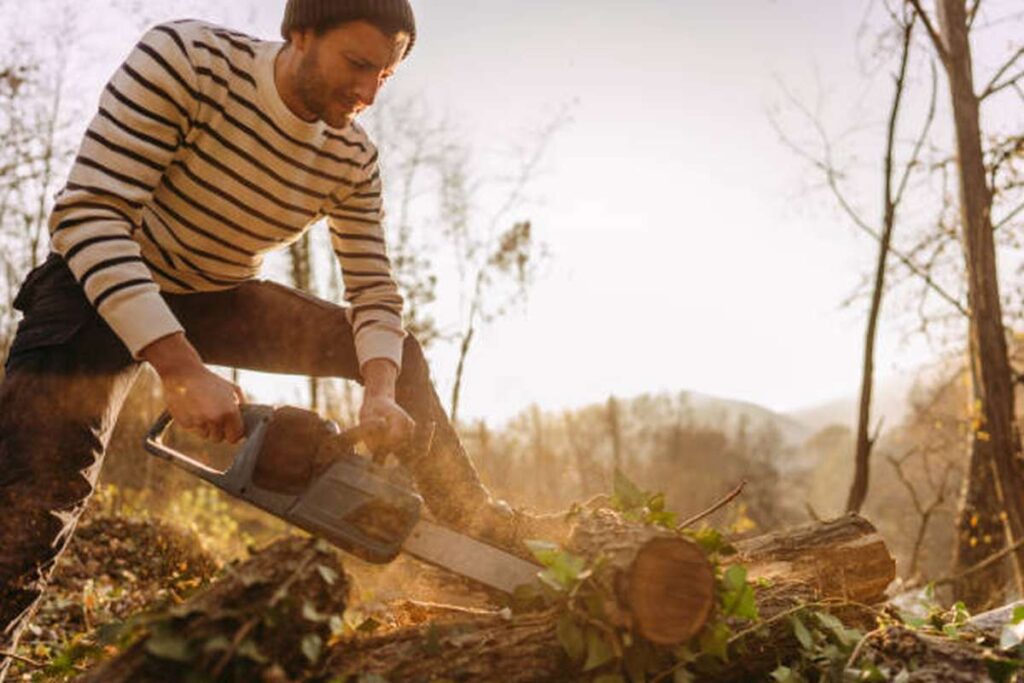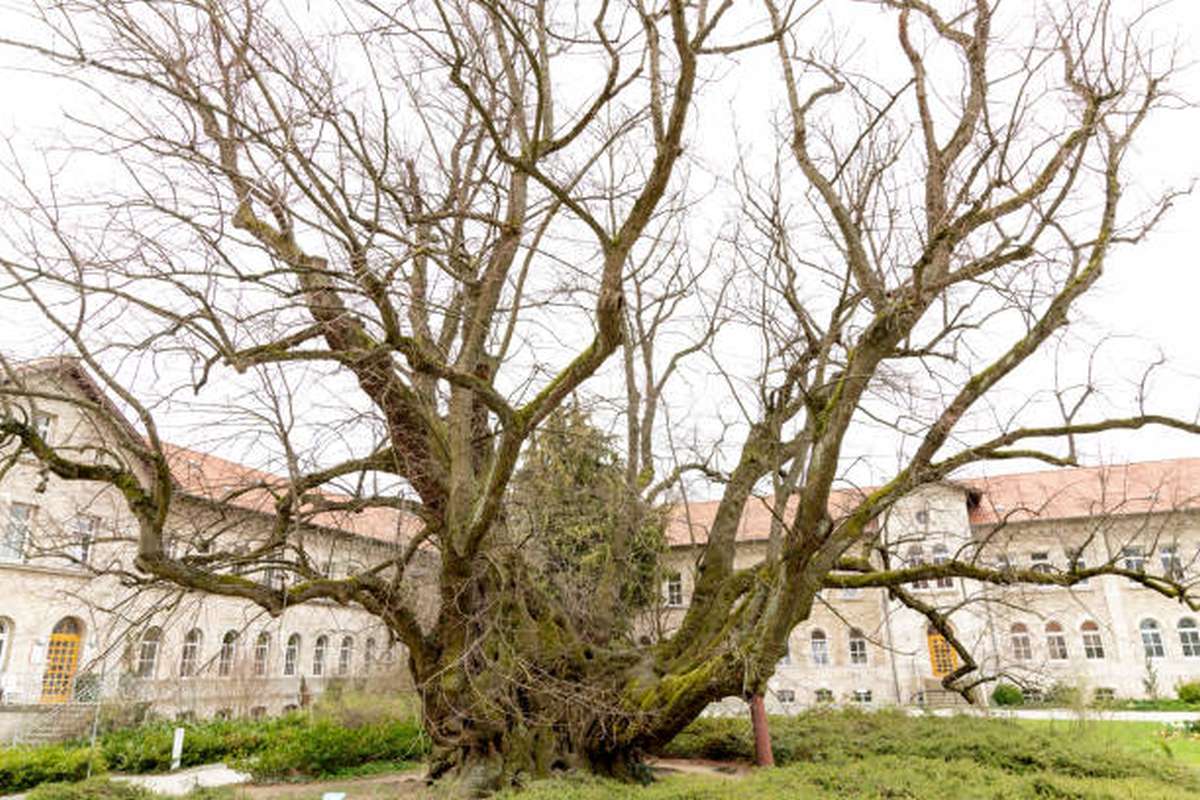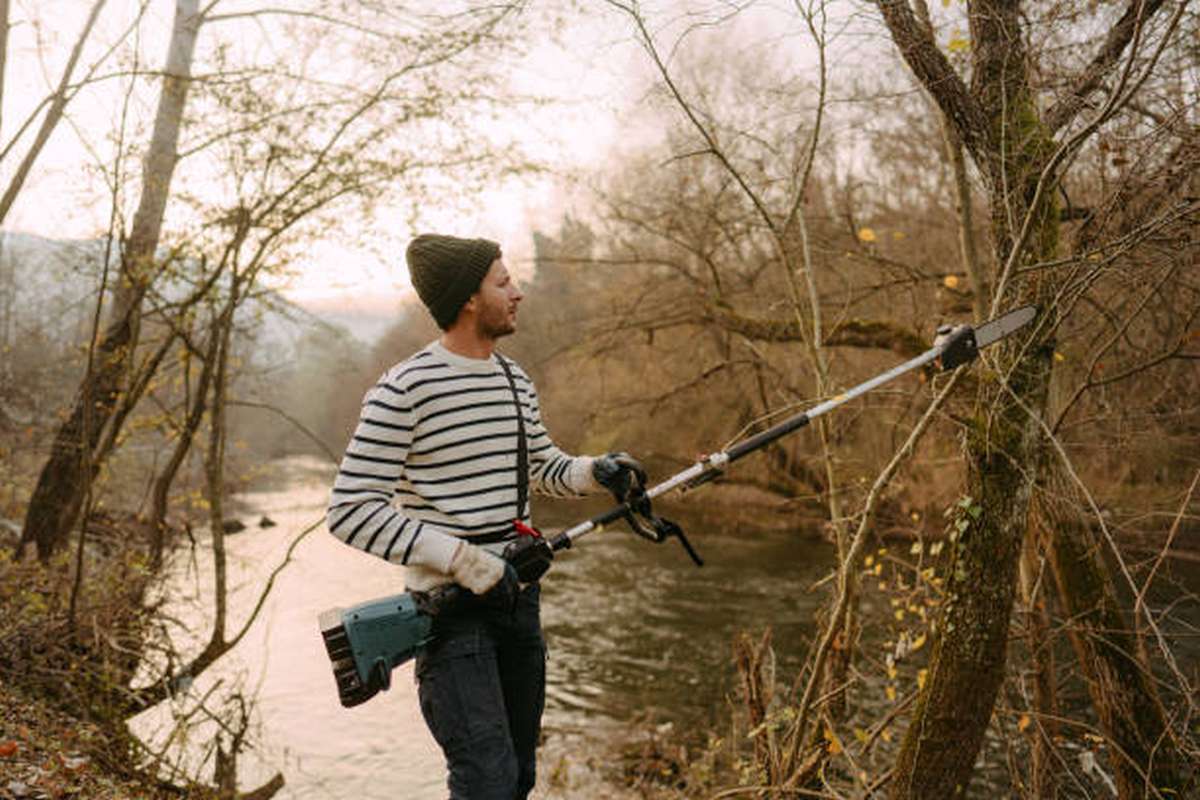While watering trees is an important element of tree maintenance, it can be difficult to determine how much water each tree actually needs. The amount of water a tree needs is highly variable, depending on a number of variables and environmental contexts. The amount of water your tree needs depends on its age, size, location, climate, soil, and species.
Because their root systems are not yet well-established, young trees need more regular watering than older plants. For this reason, they expend more effort and resources in developing a stable root system and drinking lots of water. It is usual practise to water your tree twice weekly during the first two years of its existence. But the way you water will need to change as the tree gets older.
Trees, with their deep-running roots, do better with infrequent, deep watering than with regular, shallow irrigation. As opposed to using a hose, which may merely wet the surface of the soil and ignore the roots, drip systems allow water to slowly flow down into the soil and reach deep into the roots, making them the favoured approach in the industry.
Depending on factors like elevation and the kind of soil, tree watering needs will vary from place to place. There are, however, indicators that might assist you know when to water. The first is to do a soil test.
Check the soil's moisture content by making a small hole with your finger or a screwdriver. If it feels dry, water it; if it feels damp, wait a few of days before doing so.
Extreme weather, such as flooding or a prolonged drought, might make it difficult to tend to your tree. Planting trees adapted to dry conditions is a good idea if you live in arid regions. It will increase the tree's chances of survival and decrease the amount of care it needs. For trees, mulch is like having a best friend. Mulch your trees constantly because it keeps the soil moist and keeps weeds at bay.
A Method for Caring for Newly Planted Trees
Most of a tree's roots remain within the original root ball for the first few months following planting, with some roots beginning to develop outside this area. Maintaining a consistent moisture level throughout the root ball and surrounding soil will promote strong root development. After a couple of months, the watering zone can be extended to include all of the space beneath the canopy.
For a tree to get established, meaning that its roots have spread out into the surrounding soil and beyond the original planting hole, it may take two growing seasons. Since natural rains may not be sufficient in the first few years, it is essential to supplement the soil with water. During hot, dry weather, new trees may need watering as much as three times a week to prevent the root ball from drying out.
Frequently Asked Questions
This career requires physical fitness and comfort with heights. A career as an arborist is an excellent opportunity for those who love to work independently outdoors, like to use their mind to prevent and solve problems and are comfortable with physical exertion in varying weather conditions.
You need to score 76% to pass the exam. You need to respond correctly to 152 questions to maintain a 76%.
Arborists are tree surgeons. They specialize in pruning, trimming and removing trees. Landscapers take care of lawns, shrubs, hardscaping and light tree trimming. The two professions overlap, but they aren't the same.
An arborist is a specialist, whereas a horticulturist could be considered a generalist when it comes to plants. The science of horticulture covers a wider spectrum than that of an arborist, whose concern is trees or shrubs.
Climbing Arborist - is a position that the majority of Arborists will do at some point in there career and is the most rewarding.
Established Trees in Need of Water
Many people wrongly believe that a tree's underground structure echoes its aboveground canopy. While it may seem that a tree's roots would stop at the edge of its canopy or drip line, in actuality they often grow far deeper. Most tree roots are found in the top 12" to 18" of soil, while some anchor roots may go much deeper.
You should water mature trees thoroughly, wetting the ground several feet beyond the drip line. Each time you water, the soil should be soaked to a depth of at least 10 inches. Watering the region immediately surrounding the trunk can cause decay, therefore it's best to avoid doing so.
The Art of Irrigation
A long screwdriver (at least 8 inches) is the quickest and most reliable tool for checking soil moisture. It can be pushed readily through wet soil but will be stubborn through dry. Do not wait to water until you are unable to insert a 6-inch stick. In general, clay and loam soils are ideal for this method.
Warnings Your New Tree Needs Extra Care
The needs of a tree that has just been planted are more than usual. But if something is wrong, finding out what it is will help you fix it and protect your new plant from additional harm.
Here are some of the most typical concerns with young trees and the symptoms of these treatable conditions. If you want to make sure your new addition to the yard survives, calling a tree service in Portland is your best bet if the issue is not obvious.
Lack of Hydration
The root system of a young tree is still developing, thus it needs more regular watering than that of an older tree. Twice-weekly watering is normal in the first few years of a tree's life.
Trees, with their deep-running roots, do better with infrequent, deep watering than with regular, shallow irrigation. Drip systems are favoured because, unlike a hose, they allow water to seep slowly down into the soil and reach deep into the roots, which is why they are so effective.
Use a screwdriver to poke about in the dirt and get a feel for the moisture level to see if the plant needs watering. It's time to water if the soil is dry, but you can wait a few days if it feels damp.
The climate of the area where the tree will be planted is another consideration in estimating the amount of water it will require. If you reside in a dry area, it's recommended that you plant trees that can withstand extended periods without water.
The use of mulch around a tree's base helps keep the soil moist and keeps weeds at bay.
Insufficient Drainage Due to Excessive Precipitation
The effects of overwatering a tree are equivalent to those of not watering it at all. It is crucial to distinguish between the signs of overwatering and those of drought.
Overwatering can cause root rot or fungus, as well as cause the tree's leaves to become yellow on the lower branches or inside the canopy.
Newly planted trees require careful watering, while established trees can be left to their own devices. After the first two years, a tree will have the right root structure to endure a wider range of water conditions on its own.
For further information regarding a tree's health, it's always a good idea to call a tree service in Portland.
Don't Let The Bugs In
The majority of trees can tolerate some level of insect infestation. But when insect numbers explode, that's when problems start to arise. Too often, pests go undetected until there are too many to ignore. Thus, it is important to undertake a regular and systematic tree inspection process, particularly in the spring.
A thorough tree check should involve looking for anomalies in the tree's bark, stems, and leaves caused by pests or structural damage.
Insect pests on trees can be managed in a variety of ways, many of which don't need the use of chemical pesticides. However, homeowners can apply pest control products to smaller trees.
You might ask a garden supply shop near you for advice on what to use. Applications of control agents to huge trees will necessitate the use of specialised equipment. Hiring a professional arborist who is trained and authorised to use pesticides may be the best option in such a scenario.
Drought and Trees
Symptoms of stress may manifest gradually, maybe even more gradually than those of insects or diseases. Look out for things like dieback of twigs and branches, wilting leaves and tender new growth, peeling bark, and the presence of fungi projecting from stems and branches. These symptoms keep coming back over time, suggesting the tree is under persistent stress.
If you want to lower your stress levels, planting trees in strategic locations is essential. Studies show that a tree's chances of survival are much improved if the hole in which it is planted is deep enough and wide enough to accommodate the tree's growing root system.
Some guidelines for tree-planting are as follows:
- Trees should be located in less-trafficked locations.
- Think about drainage when choosing a planting spot.
- Before planting anything, get the soil checked.
- Choose a tree whose needs for expansion are compatible with those of the area.
- Create a hole in the ground that's as deep as the root ball will be in its final location.
Proper Fertilisation
Only when the tree's leaves display signs of nutrient inadequacy, like excessively pale colour or abnormally small leaves, can fertiliser be used. Nutrient deficiencies also manifest themselves in other ways, such as diminished yearly twig growth and branch tip dieback.
Keep in mind that other sources of stress besides malnutrition could cause similar symptoms. There could be a number of reasons for the tree's decline, therefore it's important to always look at the tree and its surroundings.
Apply fertiliser with an N-P-K ratio of 3-1-2 or 4-1-2 if you must. You can't go wrong with a fertiliser formula like 24-8-16, 12-4-4, 18-6-12, or something like. Lawn care products that are designed for application to lawns are fine, but you should avoid ones that contain weed killers. Instead, slow-release or water-insoluble nitrogen-rich fertilisers should be utilised.
It's crucial to understand the various variables that can effect the development of a newly planted tree, as there are many obstacles in its path.
How to Tell If You've Been Underwatering or Overwatering Your Trees
A tree in a customer's yard may have a deceptive appearance because of the heat or drought. Both under- and over-watering are commonplace, and the problems usually worsen until it's too late to fix them.
Using a long screwdriver to probe the soil around a tree's roots is a simple and quick approach to determine whether or not the tree needs watering. If it's hard, the tree probably needs extra water.
Alternatively, you can dig down 6-8 inches below the tree and get a sample of soil to examine. It's ideal if the soil is chilly and damp. If it's soggy, that means the tree is getting too much water; if it's sandy, you should roll it up. If it breaks apart, your tree needs additional water.
As long as you know what to look for, trees may be a great source of information. Determine if your customer's trees are suffering from over or underwatering by looking for telltale symptoms.
Trees, without a doubt, increase the aesthetic value of a property. However, they are unable to communicate when they have consumed an excessive amount of water or are in imminent danger of dehydration. However, there are a few red flags that individuals familiar with trees might look out for. Insights from trees can often be found in unexpected places.
The best method to maintain a tree's health is to know what these signs are and keep an eye out for them. Learn the telltale symptoms of a tree that has been over or under watered.
The Effects of Under- and Over-Watering Trees
Both overwatering and underwatering can kill a tree. Yet, there is a unique set of complications that might result from each of these difficulties.
Indicates You're Not Giving Your Trees Enough Water
You may have underwatered plants if you see trees with curled or wilted leaves that may turn brown at the margins or tips.
Dehydrated trees typically have sparse canopies and exhibit symptoms such as small leaves, yellowing foliage, or burned leaves.
Verify the time of year as well. Underwatering may be to blame if trees start losing leaves or changing colour before they should.
Take a moment to inspect the landscape's foliage on each stop as you visit with clients. If you notice that your clients' trees are going without water for extended periods of time, suggest that they establish a watering regimen.
Customers in drought-prone regions or arid regions would appreciate this feature especially. Keep in mind that trees with long, deep roots want to be watered in this way. It's possible that the lawn is consuming the water from a sprinkler system if one is being used in the yard. Customers might need a soaker hose designed for watering trees.
- Leaves that curl or wilt and turn brown at the tips or edges.
- Lack of diversity in canopy foliage due to small leaves, fading, or leaf scorch.
- A sudden and unexpected change in foliage coloration or the premature falling of leaves.
Warnings Your Trees May Have Received Too Much Water
If the soil surrounding the base of the tree never dries up, it's possible that the tree has been overwatered.
One way to tell whether there is too much water is to observe the new growth around the tree's trunk. If the growth yellows or turns green before it is fully developed, there is too much water.
Take special care to observe the foliage. Even if they appear to be healthy and green, too much water might cause them to wilt and break.
- Although the leaves are green, they are quite delicate and readily broken.
- The tree's new growth wilts before it can mature, or it turns a pale yellow or green colour.
- The area under the tree never dries out.
A Guide to Determining Whether Your Tree Is Receiving an Appropriate Amount of Water
Overwatering and underwatering can cause similar problems for trees. The good news is that there are two methods you may use to determine whether or not your tree needs additional watering.
First, you can try digging a hole under the tree using a long screwdriver. You should water your tree extra if you find it difficult to do so. The alternative is to dig down about a foot and take some dirt from under the tree. It ought to be chilly and damp to the touch. Watering too much occurs when the soil becomes entirely saturated. A ball can be made out it if it isn't sandy or wet. If the ball disintegrates, it means you need to water your tree more frequently. If the dirt ball does not move when prodded, you are most likely dealing with clay.
Tips for Reviving a Drowned Tree
Trees have trouble breathing when they are overwatered because the water fills up the spaces that once contained air. Root rot, long-term tree stress, or fungal infections may result from the tree's roots receiving an inadequate amount of oxygen.
Stop watering a tree temporarily if you notice it is receiving too much water. Let it dry for a week or so, the length of time needed dependent on how much water has gathered. The next time you go to water the tree, use the screwdriver test to pinpoint exactly where it needs watering.
Soil that is mostly clay should be amended with compost to improve drainage for the tree your customer has planted.
After a shower, look around the trees to check whether any puddles have formed. For instance, you could look to see if a rain spout empties near the tree or if water is running down a hill and collecting at the tree's base.
If you find your tree has been overwatered, it is probably struggling to take in oxygen. The soil's air pockets will be displaced by all the additional water, suffocating the tree's roots and making the water toxic. As a result, the plant may experience stress, the growth of fungi, and the eventual death of its roots. Apply the following solutions to correct these problems:
Leave the tree without water for a couple of weeks.
Adding compost to clay soil improves drainage.
The next time it rains, check the tree to see where the water is pooling so that you can fix the issue.
Consult an expert if you are still unsure as to whether or not you are over- or under-watering your tree. They will be able to advise you on what steps to take to ensure the continued health of your tree.
Conclusion
The amount of water a tree needs is highly variable, depending on a number of variables and environmental contexts. Mulch your trees constantly because it keeps the soil moist and keeps weeds at bay. Planting trees adapted to dry conditions is a good idea if you live in arid regions. Maintaining a consistent moisture level throughout the root ball and surrounding soil will promote strong root development. Most tree roots are found in the top 12" to 18" of soil, while some anchor roots may go much deeper.
Water mature trees thoroughly, wetting the ground several feet beyond the drip line. A young tree needs more regular watering as its root system is still developing. Twice-weekly watering is normal in the first few years of a tree's life. Drip systems favoured because they allow water to seep slowly down into the soil and reach deep into the roots. Planting trees in strategic locations can reduce their stress levels.
Both under- and over-watering are commonplace, and can kill a tree. Determine if your customer's trees are suffering from over or underwatering by looking for telltale symptoms. Underwatering may be to blame if trees start losing leaves or changing colour before they should. Overwatering and underwatering can cause similar problems for trees. There are two methods you may use to determine whether or not your tree needs additional watering.
Watering too much occurs when the soil becomes entirely saturated. Customers might need a soaker hose designed for watering trees. Stop watering a tree temporarily if you notice it is receiving too much water. Let it dry for a week or so, the length of time needed is dependent on how much water has gathered. Consult an expert if you are unsure as to whether or not you are over- or under-watering your tree.
Content Summary
- The amount of water a tree needs is highly variable, depending on a number of variables and environmental contexts.
- The amount of water your tree needs depends on its age, size, location, climate, soil, and species.
- Depending on factors like elevation and the kind of soil, tree watering needs will vary from place to place.
- There are, however, indicators that might assist you know when to water.
- Mulch your trees constantly because it keeps the soil moist and keeps weeds at bay.
- Maintaining a consistent moisture level throughout the root ball and surrounding soil will promote strong root development.
- Since natural rains may not be sufficient in the first few years, it is essential to supplement the soil with water.
- Warnings Your New Tree Needs Extra CareThe needs of a tree that has just been planted are more than usual.
- But if something is wrong, finding out what it is will help you fix it and protect your new plant from additional harm.
- Here are some of the most typical concerns with young trees and the symptoms of these treatable conditions.
- Twice-weekly watering is normal in the first few years of a tree's life.
- Trees, with their deep-running roots, do better with infrequent, deep watering than with regular, shallow irrigation.
- The climate of the area where the tree will be planted is another consideration in estimating the amount of water it will require.
- It is crucial to distinguish between the signs of overwatering and those of drought.
- For further information regarding a tree's health, it's always a good idea to call a tree service in Portland.
- Thus, it is important to undertake a regular and systematic tree inspection process, particularly in the spring.
- However, homeowners can apply pest control products to smaller trees.
- If you want to lower your stress levels, planting trees in strategic locations is essential.
- Keep in mind that other sources of stress besides malnutrition could cause similar symptoms.
- Using a long screwdriver to probe the soil around a tree's roots is a simple and quick approach to determine whether or not the tree needs watering.
- Determine if your customer's trees are suffering from over or underwatering by looking for telltale symptoms.
- However, there are a few red flags that individuals familiar with trees might look out for.
- The best method to maintain a tree's health is to know what these signs are and keep an eye out for them.
- Learn the telltale symptoms of a tree that has been over or under watered.
- Keep in mind that trees with long, deep roots want to be watered in this way.
- One way to tell whether there is too much water is to observe the new growth around the tree's trunk.
- Take special care to observe the foliage.
- The area under the tree never dries out.
- The good news is that there are two methods you may use to determine whether or not your tree needs additional watering.
- First, you can try digging a hole under the tree using a long screwdriver.
- You should water your tree extra if you find it difficult to do so.
- Root rot, long-term tree stress, or fungal infections may result from the tree's roots receiving an inadequate amount of oxygen.
- Stop watering a tree temporarily if you notice it is receiving too much water.
- If you find your tree has been overwatered, it is probably struggling to take in oxygen.
- The soil's air pockets will be displaced by all the additional water, suffocating the tree's roots and making the water toxic.
- Apply the following solutions to correct these problems:Leave the tree without water for a couple of weeks.
- Adding compost to clay soil improves drainage.
- Consult an expert if you are still unsure as to whether or not you are over- or under-watering your tree.




